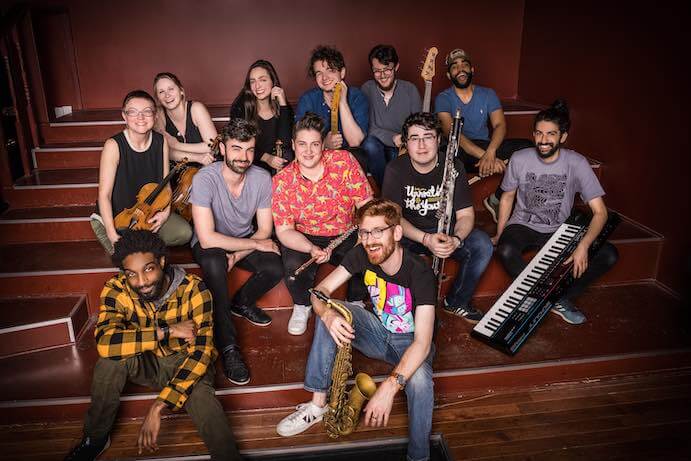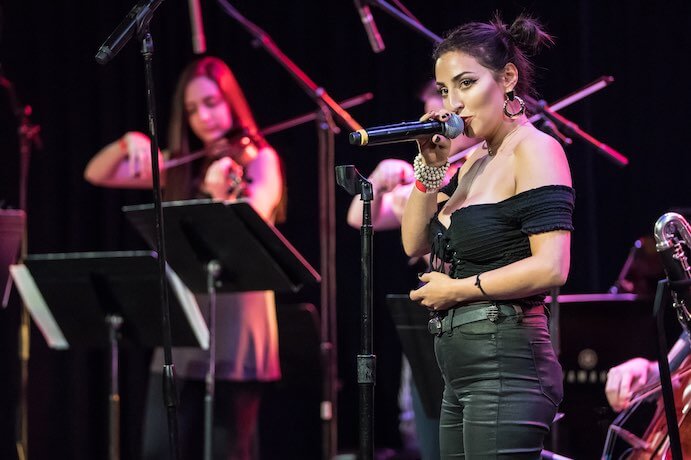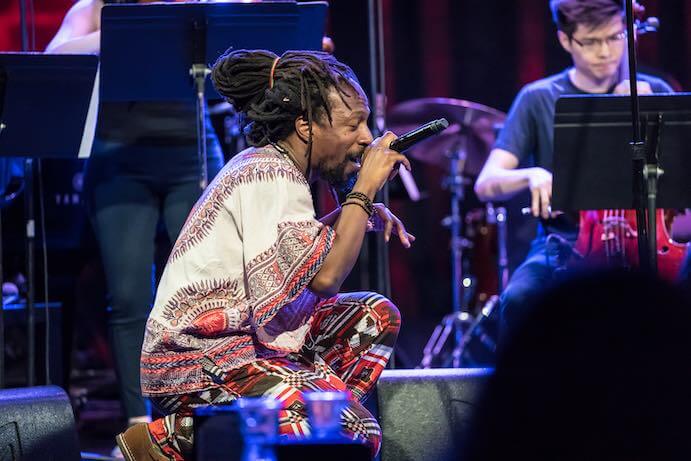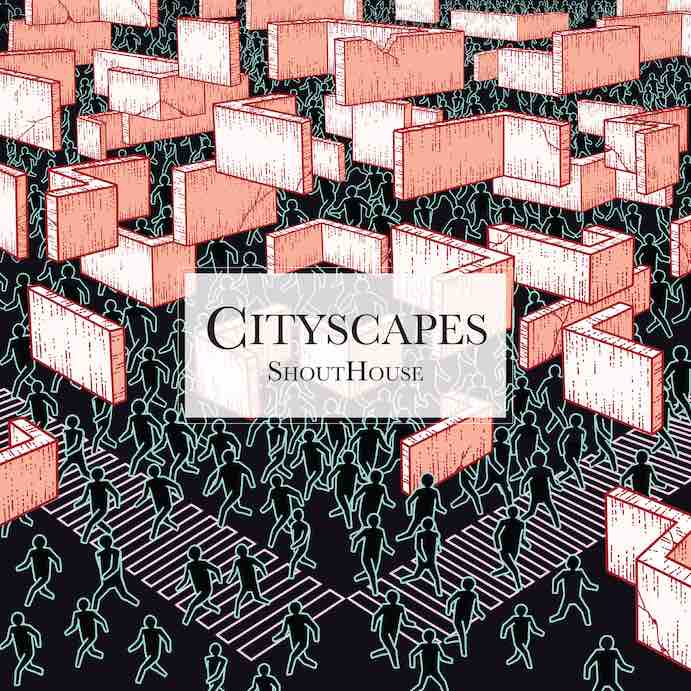Cityscapes (New Amsterdam Records) is the first full-length album from ShoutHouse, a collaborative artistic project and band made up of four composers, five rappers, three jazz soloists, and more than a dozen classical musicians. The album, conceived by composer Will Healy, portrays a montage of New York City’s history through a series of musical scenes captured in chronological order from prehistory to the future. The Bandcamp genre tags include classical, hip-hop, rap, jazz fusion, classical crossover, and New York (wait a minute, is “New York” a genre?), which leaves one wondering precisely who could possibly encompass all of those categories as a listener. But perhaps that is what’s great about this album–it carves out a niche that is completely its own, one in which nobody but the artists themselves could be an expert.
I have been to New York City. I came very close to moving there once–typical midwestern theater-girl longing tints my dreams of what life would be like there, dreams I have nursed with the fervor of a long-distance romance. And frankly, I’m not the only one. What artist lives in New York City without mining it for artistic inspiration? It’s almost a cliche. Hell, even Taylor Swift proclaims “Welcome to New York, it’s been waiting for you.” So when ShoutHouse’s album came across my inbox, I have to admit, I was dubious. What more is there to say? As it turns out, quite a lot.

ShoutHouse–Photo by Brandon Ilaw
The strength of Cityscapes undeniably draws from the huge depth and breadth of talent in the ensemble. The opening track “Manahatta” begins with swirls of instrumental chamber music that are so beautiful and ethereal that the vocalist’s entrance comes as a pleasant surprise. In fact, throughout the album, the vocalists swim between genre styles, from indie-pop breathyness to jazz belting. The MCs are virtuosic both poetically and musically, blending into what is (for me) the more familiar sound of a new music chamber ensemble, although I’d be curious to listen with the ears of someone who is better versed hip hop or jazz.
The performances on Cityscapes are colorful and varied. Specific solo highlights include the passionate and wild saxophone solo by Connell Thompson on the opening track “Manahatta” and Akinyemi’s astounding MC break on “Ancient Tools,” in which he masterfully raps over a rapidly shifting landscape of irregular time signatures. Throughout the album, the band demonstrates the pliability of their style, but some of the most engaging moments are the ethereal dissonant sections in “Ancient Tools” and the playful and energetic “ANTS,” in which the band hilariously leans into the motivic play between the piano/electric guitar and pizzicato strings/woodwinds, then gutsily flows into a heavier electric guitar-driven sound.

ShoutHouse singer Hannah Zazzaro–Photo by Brandon Ilaw
The narrative of each track generally opens with instrumentals that work in conjunction with vocals, eventually building to an instrumental solo, a rap break from the MC, or both, before closing with more instrumentals. But don’t be fooled into thinking these works are formulaic — far from it. Somehow, each track really does sound like some small aspect of New York thanks to creative orchestration, widely expressive vocals, rhythmic flexibility, and truly gorgeous harmonic tapestries. With three composers contributing movements to the work, one might expect some stylistic incongruities to pop up, but thankfully that’s not the case at all. Will Healy (track 1, 2, 3, 6, 7), Aaron Ewing (track 4), and Jesse Greenberg (track 5) each write in language which converses easily with the others–and it likely helps that the composers are all musicians in the ensemble, themselves.
In general, the sound of Cityscapes evokes modern Broadway soundtracks rather than contemporary classical albums–the mixing is decidedly “studio-y”, with a careful balance achieved between instruments that would normally overwhelm each other (piano versus violin versus guitar, for example). This kind of produced sound environment may seem questionable for contemporary chamber music, but it aligns with concert practice for ShoutHouse, in which band members perform with mics on all the instruments, bobbing their heads around like they are enjoying themselves and feeling the music. Honestly, if you’re not listening to this album on headphones, you’re doing it wrong. Headphones, too, are appropriate for the iPod-shuffle-esque way in which each movement swirls between genres. The best and only way to hear this album is with curiosity–try to be an NPR All Songs Considered, Spotify Radio-shuffle, YouTube music video rabbit hole, record store sale bin-loving listener.

ShoutHouse MC Spiritchild–Photo by Brandon Ilaw
Or maybe another way to listen is to picture yourself walking the streets of New York City, knowing as you walk that the boundaries between cultures and styles are everything and nothing. You need those boundaries to be defined, and yet in order to form community, you have to explore exactly where those boundaries dissolve into one another. The joy in the splintering of the midcentury monoculture is that now we get to listen to albums like Cityscapes. I know exactly where I am when I hear this, there’s only one place I could be: a place where I can hear brilliant hip-hop-style expressive spoken word, gorgeous smokey jazz, sultry and sad Celtic music, and the instrumentation of a Broadway band. We can only be in one city. Maybe New York is a genre after all.






















